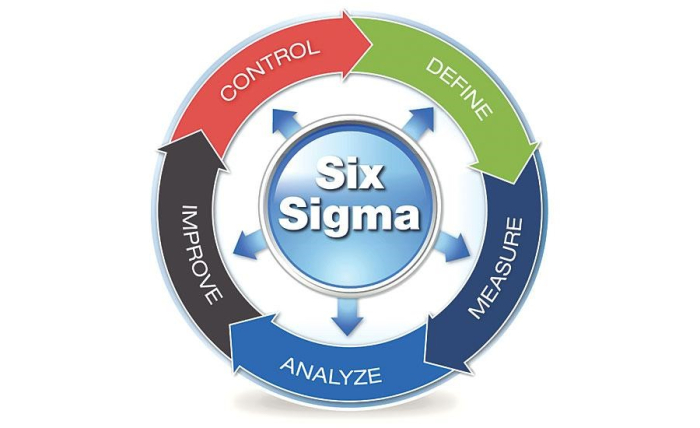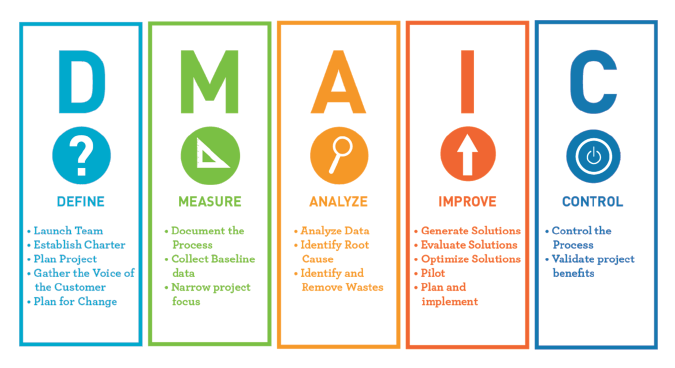
 Data Structure
Data Structure Networking
Networking RDBMS
RDBMS Operating System
Operating System Java
Java MS Excel
MS Excel iOS
iOS HTML
HTML CSS
CSS Android
Android Python
Python C Programming
C Programming C++
C++ C#
C# MongoDB
MongoDB MySQL
MySQL Javascript
Javascript PHP
PHP
- Selected Reading
- UPSC IAS Exams Notes
- Developer's Best Practices
- Questions and Answers
- Effective Resume Writing
- HR Interview Questions
- Computer Glossary
- Who is Who
7 Burning Questions Every Six Sigma Professional Would Ask
Six Sigma is a set of processes and tools that help companies improve their quality by reducing defects. In the past few years, it has become an increasingly important part of business strategy for small and medium?sized companies because it helps them get ahead in the market.
What is the importance of Six Sigma?
Six sigma is an important quality management system that has been adopted by many businesses in order to achieve greater efficiency, reliability, and accuracy.
Today, Six Sigma is used by companies of all sizes and industries to reduce variation and improve process flow. It helps organizations identify problems early on so they can be corrected before they cause major disruptions or worse yet, casualties.

If you want to join this trend and become a Six Sigma professional yourself, then here are some burning questions every Six Sigma professional would ask himself or herself ?
Why so much focus on the customers?
This may seem like a simple question, but it's not. Many have heard more than one smart Six Sigma professional ask this very question? "Why do we need to care so much about customers?"
The answer has nothing to do with your job title or how many times you've been tasked with improving quality. First and foremost, customer feedback is essential for creating successful products. It's through customer feedback that you can identify issues early and fix them before they become larger problems.
Ultimately, it's important to remember that the success of any business depends on its relationship with its customers. So don't hesitate to reach out to them ? both in person and online ? and let them know what you're doing and how it benefits them!
How can Six Sigma be deployed profitably in a small business?
Six Sigma is not a cure for all business problems. It's often used to solve problems that don't fit the typical definition of a "business problem."
Six Sigma can be used to reduce defects and increase productivity in many areas of manufacturing, service delivery, and supply chain management.
But it's important to understand that there are no silver bullets here. Rather than being a magic wand Six Sigma is more like a set of tools you can use together to create better results than either one alone would produce.
What is the difference between Six Sigma and Lean Six Sigma?
Lean Six Sigma is a subset of the classic Six Sigma methodology. It focuses on customer value instead of process improvement, and it has been described as "the next generation" of Six Sigma.
Six Sigma is more focused on improving processes to reduce defects and increase quality, whereas Lean Six Sigma improves processes to optimize customer value by reducing costs and increasing revenues for an organization or company.
What are the different levels of Six Sigma certification?
There are several levels of Six Sigma certification. Some of the certifications are ?
Green Belt ? This is the level 4 certification and it takes you a maximum of 10 weeks to complete this course.
Black Belt ? This is the top level of certification. It will take you one to three months of training. It will help you with all the philosophies and components of Six Sigma.
Master Black Belt (MBB) ? It takes about one to three months to complete depending on how much time it takes for each person's schedule. This is also known as "mastering your craft" or "mastering yourself." This degree will help you build up a proper Six Sigma approach and strategy.
How does one prepare for Six Sigma certification exams?
There is no single way to prepare for the Six Sigma certification exam, and each candidate should tailor their study plan to fit their own needs. However, there are some basic steps you can follow ?
Take a class that introduces the concepts and terminology of Six Sigma. These classes are usually taught by experts who have been certified in one or more areas related to Six Sigma, so they're valuable sources of information about how these methods work in practice.
At least two years of experience working on projects involving quality control will also give you an advantage when taking these courses because they're often designed around real?world experiences rather than theory alone.
Read books by experts who have written about implementing Six Sigma methods into your organization's processes. These books will explain how exactly each step works but also provide tips on how best to use them in your workplace.
Practice with mentors who can help guide you through all aspects of preparing yourself mentally before taking any test.
Use sample papers! These papers can help you understand how the various processes work and give you a better understanding of how defects are identified and eliminated in your chosen industry.
What makes for a good Six Sigma project manager?
A good Six Sigma project manager is not just skilled in the technical aspects of projects ? they also have a strong understanding of business and how to link the two. They must be able to manage resources effectively, stay organized, and handle conflicts diplomatically.
They should also be able to work well under pressure and see projects through to completion. A good project manager must be able to effectively lead a team of people toward success. They must know how to set goals and expectations, as well as motivate their team members when things get tough.
To become a good Six Sigma project manager, it's important to have managing experience. You need excellent communication skills both verbal and written. Additionally, they should be able to identify problem areas early in the process, so that they can be corrected before they become serious issues.
Are there any rules for conducting a DMAIC project or just guidance from books?

A DMAIC (Define, Measure, Analyze, Improve, Control) project is an approach to improving a process that helps you identify the problems and measure the effects of your changes. It's also useful for quickly spotting possible failure modes and making necessary corrections.
There are no hard and fast rules when it comes to conducting a DMAIC project, but there are several books that can offer guidance. The best way to find out is to read one or more of these books and see what works best for you and your team.
Some guidelines that may be helpful include ?
Start with the big picture ? Take time to understand how your business functions from start to finish before starting any work. This will help you better identify key areas where change is necessary, and ensure that all aspects of the operation are coordinated during implementation.
Plan each step of the process carefully ? Make sure each step leads logically into the next so that everything runs smoothly together.
Be patient ? It can take time to implement changes successfully.
Conclusion
In conclusion, Six Sigma is an excellent way to improve your business processes, but it's important to make sure you have a plan and proper tools in place before embarking on this journey. Ask any Six Sigma professional about their experience and they would tell you that it takes a lot of hard work, patience, and dedication to learn this method.
This doesn't mean that you can't start off with the basic steps right away. Instead, make sure to practice these methods in small batches until you get comfortable. There are several certification programs available that can help you develop the skills needed to lead teams through the process of implementing Six Sigma.

